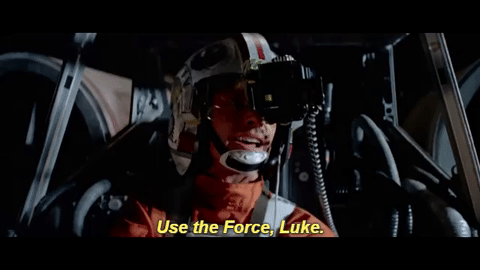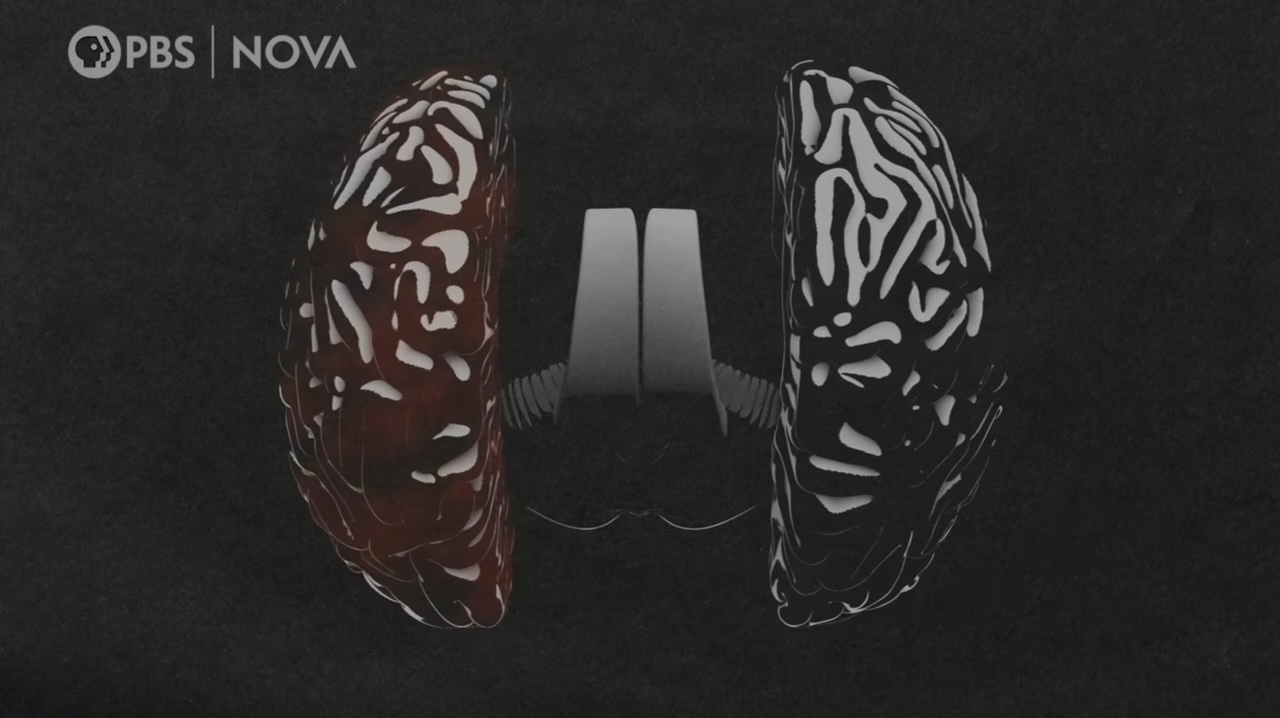Kingdom of Mind PART SIX
Path to AGI ends in a Cornfield
October, 2025

Previously on Kingdom of Mind...
In Part One, we introduced Turing's "Imitation Game," Moravec's Paradox, and Minsky vs HAL 9000.
In Part Two, we introduced a working definition of Intelligence and the Bitter Lesson.
In Part Three, we introduced the Child-King and the Illusion of Sovereignty.
In Part Four, we introduced 'stepping up' from Language and 'stepping down' from Consciousness.
In Part Five, a breakdown in Consciousness through physical trauma and ICU Psychosis.
Attention: Spotlight and Floodlight
Zen philosopher Alan Watts defines two types of Consciousness: The Spotlight and the Floodlight. He gives an example of 'the Spotlight' as activated when we are told "pay attention!" and 'the Floodlight' when we are driving, but our thoughts are elsewhere. Watts was working to get people past the notion of a singular 'I' form of Consciousness. We are already at a finer level of distinction, but if we substitute 'Awareness' for 'Consciousness,' we will be close to the same page as Alan.

In Part Three, we already introduced the process of driving a car (via the Kingdom), while Consciousness (the Child-King) was focused on something else altogether. The purpose was to introduce non-conscious functionality, but also to require Awareness as a necessary component. If sensory input was cut off, Awareness could not advise the Kingdom and the car would crash. Alan Watts makes a case that 'Enlightenment' requires recognition of 'Floodlight' awareness, but really, he is drawing our attention to the deeper functionality of the Kingdom.
Attention seems to be either 'Spotlight' and associated with the Child-King, or 'Floodlight' and in service of the Kingdom. It would be an interesting psychological experiment to illuminate all the conditions under which that relationship swaps. Eitherway, though, the nature of Awareness seems to be binary, with some time-sharing possible, but my own experience indicates one mode comes at the expense of the other. If this still seems vague, ponder the conflict created by texting while driving.
Spectator: Isolation and Immersion
The internal character of 'I' is always associated with the Spectator, but it also projects itself into other aspects of Consciousness — typically, the Child-King. The common stack of Consciousness would be: The Spectator, the Recorder, the Child-King, and Spotlight Attention. During those times, the Child-King takes credit for the output of all aspects, proclaiming, "Behold, I am Consciousness!"
This is largely why understanding Consciousness is elusive. We are trying to see our eyes with our eyes, and the best we can hope for are reflections.
Consider ways to watch a movie. You can see the picture, follow the action and even scrutinize the plot. You can be a critic and allow the Child-King and Internal Dialog to assert, "I never like these kinds of things." But, on the other hand, you can be 'swept up' by the experience and no longer have a sense of self separate from the story. You merge your own identity with what is happening and suspend all disbelief. This can also happen while reading or listening to stories as well. 'Story' is the critical medium that allows the Spectator's sense of 'I' to project into an alternate reality.
"Not Awake Yet..."
Recently, I had to rise very early and prepare to depart for an athletic event. Recognizing that I am not a 'morning person' (at all), I prepared as much as I could the night before, essentially leaving clues for the sequence of actions I would need the next morning. When the alarm went off at 4 AM I jumped out of bed and started 'doing things.'
The Spectator was functioning along with the Recorder, which is why I can recall this now. As I went through the prepared series of tasks I noted my mental state and thought lightly about how it relates to this article. There was definitely no Internal Dialog, no Visualized images, no problem solving either. I was aware and doing things, but it felt like the Child-King was still "not awake yet." The Kingdom was running the show, the Spectator was watching and Awareness was in Spotlight service to the Kingdom. An outside observer would definitely assess me as 'Conscious and Responsive' in this state. But I could recognize that I was not working with any of my more advanced mental capabilities. In the 'Theory of Mind' we project onto others, is it possible they are working without the tools of Visualization, Internal Dialog, or Child-King problem solving?
Visualization: Pictures or Aphantasia
When askled to "Take a moment and picture a scene with soft sands and gentle waves..." the vast majority of us will see a beach in our heads and even be able to provide additional details like, "What color is the sky?" Amazingly, a small percentage of the population (< 4%) cannot see any pictures 'in their heads' due to a condition called 'aphantasia.'
Many consider visualization a signature of Consciousness. Our language certainly presupposes that other people see visual images in their minds, especially when we say, "picture this" or ask them to "imagine a time..." Shared visualization seems core to communication between Kingdoms and we should easily notice if someone is faking it. But we don't notice, and apparently people with aphantasia also didn't notice until it became a cultural topic recently.

The woman above created a YouTube channel, discussing her discovery of aphantasia at the age of 40. It's worth watching one or more of her videos (introduction here) as you will realize it's not some kind of cognitive deficiency you might detect. In fact, she talks about being an exceptional student, largely because she was never distracted in class or had her attention shifted into daydreaming.
In later videos she answers questions about her internal experience with the topic of memory being most interesting.
Psychologists have a hierarchy of kinds of memory. At the top are 'short-term' and 'long-term.' One type of long-term memory is called 'semantic' memory and involves recall of factual associations. If asked, "What are the colors of the USA flag?" this might trigger a mental image of the flag (it did, didn't it?) and you would see and recite, "red, white, and blue." Someone with aphantasia would likely blurt out the same answer, possibly even sooner as they have access to the fact and there would be no image to distract them.
The other type of long-term memory is called 'episodic' memory. This is generally associated with a sequence of short, time-slice visualizations; roughly in the order of occurrence. You would rightly conclude that someone with aphantasia would be limited with this type of memory processing. When 'Quiet Mind Inside' answers about episodic events, she says, "I just know what [the answers] are," and "I just see it in a flash."
Many facts present themselves to everyone's consciousness without having to see or analyze internal visual information. For myself, I frequently get an 'optional free image' along with some fact I'm trying to recall. But I can relate to accessing the fact without the image. Accessing facts as summary attributes of an episodic memory also seems reasonable, to an extent. You would not have to relive an entire vacation to recall the name of the hotel at which you stayed. You could just "see it in a flash" without visualizing anything, including letters that spell out the name. Most of us could "blurt out the answer."
Before writing, almost all human knowledge was transmitted orally, and required much stronger memories than we exhibit today. In 55 BC the Greek orator Cicero revealed a technique known as the "Method of Loci." Essentially, this technique leverages our innate ability to navigate from place to place and remember things about each location — like "is food there?" You can understand how this is a critical and well conserved evolutionary ability. For Cicero, instead of writing an outline on paper, the main points of his planned oration were visualized and then mentally ordered along a series of buildings. During his presentation he would mentally journey between locations, visualizing each milestone of his speech. The technique is also called 'The Journey Method.'
You may have also heard this mnemonic referred to as 'The Memory Palace.' Instead of memorizing a path of external locations, the Memory Palace is a memorized building with various locations within. This becomes a permanent way to structure and recall future random elements. You might memorize a sequence of playing cards, digits of pi, or elements from the periodic table; all in a specific in order. Each of the elements in the set to be memorized is visually associated and its image placed at the locations you have permanently memorized in your Memory Palace. To recall the ordered list, you simply mentally revisit each location in order. The same Palace is used for every ordered list. This seems to be a method completely inaccessible to people with aphantasia.
Lynne Kelly is the author of 19 books who writes about prehistoric and contemporary advanced memory techniques. In her 2016 book "Memory Code," she identified powerful techniques in pre-writing artifacts such as the arrangement of Stonehenge. In 2017, she won the 2017 Australian Memory Championships (Senior division). A secret to her success was an adaptation of the 'Memory Palace' technique discussed in her follow-up book "Memory Craft." In 2020, Dr. Lynne Kelly discovered she has aphantasia!

"I don’t find [aphantasia] all a negative and can use all the memory techniques. I just rely on story and logic rather than images. It all still works."
— Lynne Kelly
Internal Sound
Auditory hallucinations involve the perception of sounds without an auditory stimulus. True, these hallucinations may be a hallmark of schizophrenia, but they are also more common in mentally healthy people. We shall focus on the healthy type.
'Earworm' is a term for a bit of music that seems to get stuck in our heads. It is usually repetitive, unwanted, and thankfully short lived. Commercial jingles are designed to produce this effect. Internally experienced music can also be quite comforting. Disney's Snow White sings "Whistle while you work" as "It won't take long when there's a song to help you set the pace." This technique is effective even when the song is performed internally.
The scope of internal music abilities ranges from 'none' to some individuals composing multipart arrangements. A have read comments from people who claim to be professional musicians despite having 'auditory aphantasia'. This reminds me of Lynne Kelly's competitive memorization despite 'visual aphantasia'. It appears there are amazing cognitive skills in which Consciousness is not involved at all and is only notified after the fact.
I think it's appropriate to assign music which can intrude into consciousness it's own agency. Keeping with the 'Kingdom' theme we will label this agent 'the Minstrel'. The Minstral can be summoned by the Child-King, or appear on it's own and be reluctant to leave when requested. People who do not have any inner voice (anendopasia) may nevertheless have the Minstrel to comfort or annoy them with inner music.
Internal Speech: Voices or Anendophasia
There are several types of inner speech, and we will briefly touch on a few. The goal is to illuminate sources of language controlled outside of the Child-King of consciousness.
When I was in the second grade a common exercise was reading aloud to the class. I was fortunate to be comfortable both reading and speaking, and came to enjoy the opportunity to perform. I remember reading aloud in class one time and admiring what a great job I was doing while it was happening. Perhaps I remember all this because it scared me. What was I doing? If I suddenly lost my place, the Child-King would be alerted to take over, and there would be no way to find where I was on the page. Humiliation would ensue. Thankfully, the Child-King, who normally performs reading and speaking, was able to transition back in control seamlessly. But the separability of performance from consciousness left a lasting impression.
That personal recollection is not an example of inner speech. Here is another: Talking aloud to yourself, which is know as 'private speech.' Young children practice speaking to themselves aloud and this seems to forms the basis for a future internal conversation which is held silently. The silent version is 'inner speech.' As adults, many people use 'inner speech' to rehearse and assess future conversations. This capacity of simultaneous speech and analysis indicates another agent, the Orator, who produces internal speech that the Child-King can assess.
People with anandophasia don't have conscious interaction with the Orator, and presumably also don't interact with the Narrator. The Narrator is another inner voice agent responsible for creating the verbalization of written text. I personally rely heavily on this agent and as I reread things I am writing I am constantly asking, "How would this sound when read aloud?"
A stated benefit of anandophasia is relief from 'intrusive thoughts' which are verbal. A demonstration of the separability of inner speech from consciousness is the attempt to create a meditative 'quiet mind' which thinks of nothing. This can be a challenge! Within moments of attempting a silent mind, most people will begin to hear inner verbal instructions like, "Don't think of anything. Quiet your inner voice. No really. Start now..."
The last type of inner voice agent I will introduce is 'the Advisor.' The Advisor is another inner voice, but one that seems to originate outside the Kingdom. In the best cases the Advisor will represent a voice of past Wisdom from a person not present. Jayne's theory of the 'Bicameral Mind' relies heavily on 'voices of the gods' which he says originate in the hemisphere opposite of our normal speech centers. We don't have to accept his entire theory to recognize that the function of the Advisor is to provide councel to the Child-King.

"Let go your conscious mind..." advises the internal voice of Obi-Wan Kenobi.
Experience of the Split Brain
In "The Origin of Consciousness in the Breakdown of the Bicameral Mind," author Jaynes gives examples from 'spit-brain' patients. These are people who have had a surgical intervention that cuts communication between the left and right brain hemispheres (usually to alleviate extreme seizures). Vision from the right eye routes into the left hemisphere, and that same left hemisphere controls movement of the right hand. The left hemisphere also controls speech. In Latin, this is your dexterous side. The right hemisphere is connected to the left eye and left hand. This is your sinister side, which can understand language but cannot speak. (For left-handed people this is usually swapped.)
In experiments with split-brain patients, one image is shown to just the right eye and no image is shown to the left eye. When asked what they see, the patient will verbally insist they 'see nothing.' However, at the same time, the left hand can draw pictures in answer to questions about what the patient insisted was 'not seen'.
"Since it does not have articulated speech, it cannot say that it sees anything. It is as if 'you' — whatever that means — were 'in' your left hemisphere and now with the commissures cut could never know or be conscious of what a quite different person, once also 'you', in the other hemisphere was seeing or thinking about. Two persons in one head."
— Julian Jaynes, The Origin of Consciousness in the Breakdown of the Bicameral Mind, p114.
The NOVA segment linked above is relatively short and provides an even better demonstration than written examples.
Further reading on the subject finds claims that the non-speech (right) hemisphere is inferior at math and logic skills, but nevertheless is better at "problem solving." This counterintuitive claim may be because the right hemisphere is supposed to be more "holistic" and "intuitive" than the "analytical" left hemisphere and perhaps the researches hold a personal belief that intuitive problem-solving is superior. Label this 'Unresolved.'
If the Child-King is summoned to provide superior problem-solving, and is also in control of language, that could indicate both hemispheres are required to participate in people with normal brain anatomy. It may also mean that certain parts of the solution are orchestrated by the Child-King from the dominant hemisphere to the non-dominant side, but if there is no answer back the Child-King just makes due.
My final observation connecting split-brain patients and aphantasia, comes from the 'Quiet Mind Inside' videos. In the 70s a movement called NLP (Neuro Linguistic Programming) began to become popular. NLP initially started with observations you could test yourself but evolved to overclaim it's therapeutic reach. Despite being labeled 'pseudoscience', NLP is still positively referenced by Tony Robbins as a useful coaching technique1.
One of the fundamental observations of NLP is that while speaking, if someone is mentally visualizing they will look up and to the side. Supposedly, you can map individuals to tell if they were engaging in a visual memory (Vr), or imagining something new (Vc). This devolved into "you can tell when someone is lying" (imagined images instead of remembered ones) and a backlash against NLP ensued. Looking midline-to-a-side can be mapped to auditory recall, and downward eye shifts indicate other sensory modes. You can play with this yourself and see that there is at least some correlation. We are going to go with the idea that, during a conversation, looking-up-and-to-a-side indicates an attempt to access visual imagery.


Eye Movement Chart from Bandler & Grinder's Frogs into Princes (1979). Directions represent 'visual construct', 'visual recall', 'auditory construct', 'auditory recall', 'kinesthetic', and 'auditory internal dialogue'. Results may vary.
Quiet Mind Inside spends almost 100% of the time looking directly into the camera as she speaks about not having visual images. She is also able to have excellent factual recall despite aphantasia. In the screen capture above you can see a rare break from looking into the camera. She is saying, "It's like..." and her gaze shoots up-and-to-the-side. This is what a person who was visualizing while speaking would do. I don't doubt for an instant her honest account of her conscious experience. Watch her video and see if you pick up on this. Is it possible, like with the split-brain experiments, that her consciousness just does not have access to the images other agents of her mind are utilizing?
In the CONCLUSION, we will consider the level of intelligence required to engineer artificial consciousness or upload human consciousness into a machine.
1. https://www.tonyrobbins.com/blog/nlp-techniques
